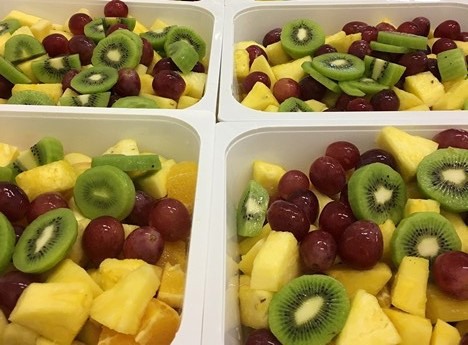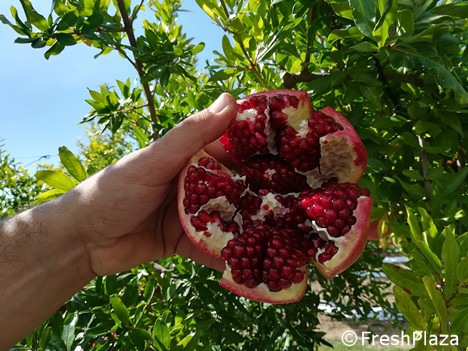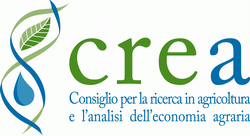Among the 2030 Agenda goals is to bring world hunger to zero, along with having to deal with the world population increase, the reduction of productive resources, with a view to sustainable food production in economic, environmental and social terms, as well as keeping quality at the forefront. CREA, therefore, with the PON R&I PROJECT 2014-2020 - known as POFACS Project - Preservability, quality and safety of fruit and vegetable products with a high service content - is moving in this direction and is ready to establish synergies with local governments throughout the country.
On 28 June 2022, the presentation of the POFACS project, coordinated by Teodoro Cardi, was held at the headquarters of the CREA - Horticulture and Nursery Research Center in Pontecagnano, in the province of Salerno.
The goal of the POFACS project is to improve the shelf life, quality, safety and sustainability of high-service fruit and vegetables, namely easy and ready-to-use fruit and vegetables that undergo minimal processing after being harvested and before being sold.

The main challenges of the sector are to increase sustainability and resource-use efficiency, extend the shelf-life, and increase the quality in the post-harvest product. This can only be achieved through innovation. This includes interventions in crop management to enhance existing plant biodiversity or new varieties, the development of specific production protocols and innovative technological processes, and the development of forecasting models.
The production chains examined by the project included leaf and baby leaf vegetables, fruiting vegetables, pomegranate, table grapes, citrus fruits, other fruits, and cross-cutting activities. Different results were recorded for each segment.

An assessment of genetic variability for plant architecture, leaf morphology, and pathogen resistance was carried out on arugula, as well as an evaluation of both sensory quality and the consumers' openness to new baby leaf genotypes. Also, an infrared imaging for early detection of soil-borne pathogens and evaluation of compost suppressiveness of different origins, and a molecular characterization of new pathogens and development of an integrated protocol to reduce nitrate content in leaves.
For other types of baby leaf, work was done on researching new types of endive scarola and curly leaf and developing new zero residue protocols for spinach intended for freezing. The use of light and different wavelengths for the growth and storage of sprouts, microgreens and baby leaves.
New agronomic management protocols in organic regimes for quality improvement were explored on artichokes; in addition, innovative and sustainable packaging made of cellulose for artichoke packaging and preservation systems based on essential oils were studied. For tomato and carrot, research focused on the development of new colored cultivars for snack food.

As for grapes, some new equipment and systems are being created for pre-preservation treatment with both gaseous and aqueous ozone. A prototype of atmospheric plasma ozone production inside sealed packages is being developed. In addition, new colonies yeast antagonistic to Botrytis cinerea are being created.
By contrast, there was varietal characterization on pomegranate first, and then an assessment of the quality of the refrigerated fruits was carried out by developing a pressing method that would enhance their quality. Whereas for other types of fruit, more high-performing varieties of citrus and peach for the fresh-cut were examined.
The cross-cutting activities related to the project are as follows: operational testing for the creation of innovative fruit and vegetable products using 3D printing; innovative and intelligent packaging equipped with gastronomic sensors; and the use of the fresh-cut residues as substrates for the growth of probiotic microorganisms.
Speakers at the workshop included Gianluca Francese, Head of the Pontecagnano CREA OF office; Daniele Massa, CREA OF Director; Stefania De Pascale, UNINA, CREA Vice President; Miquela Ugolini, MiPAAF, Deputy Head of the Legislative Office; Mariella Passari, General Director of Agricultural Food and Forestry Policies Campania Region; Giuseppe Lanzara, Mayor of Pontecagnano; Teodoro Cardi, Project Coordinator. The first results of the project were presented by: C. Pane, CREA OF; D. Massa, CREA OF; S. Scarpa, Ortomad; M. Galiè, Salpa; S. Lombardo, UNICT; A.D. Marsico, CREA Viticulture and Enology; D. Simonelli, SAIM; F. Ferlito, CREA Olive, Fruit and Citrus Farming; R. Surico, Masseria Frutti Rossi; C. Severini, UNIFG. The event ended with a panel discussion on arugula.
For more information:
CREA - Centro di ricerca Orticoltura e Florovivaismo
Via Cavalleggeri, 25
84098 Pontecagnano (SA)
+39 089 386211
of@crea.gov.it
teodoro.cardi@crea.gov.it
